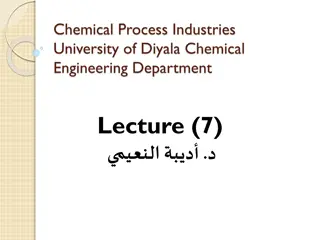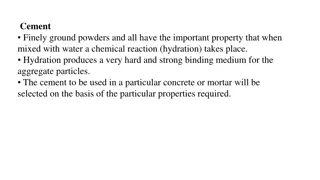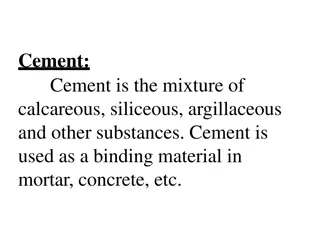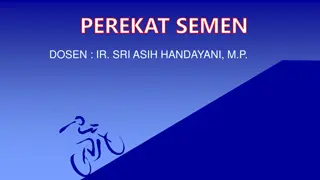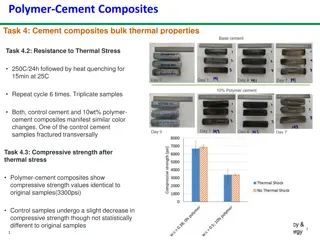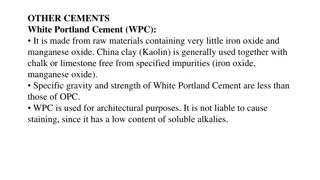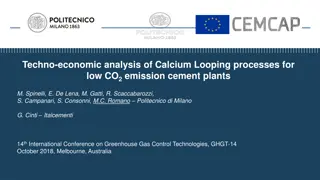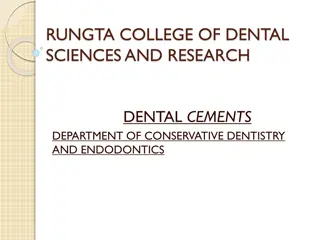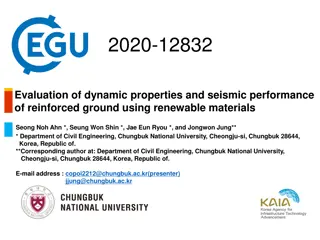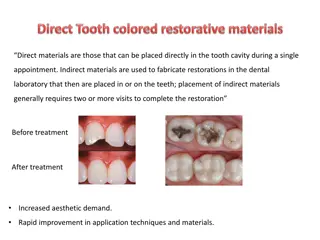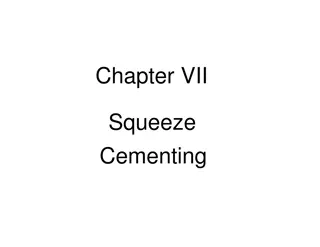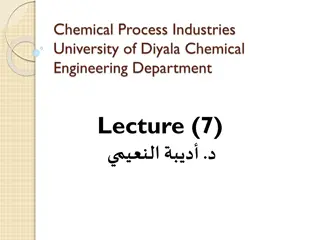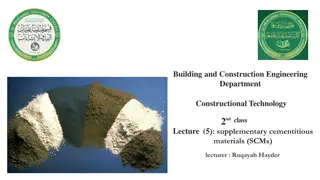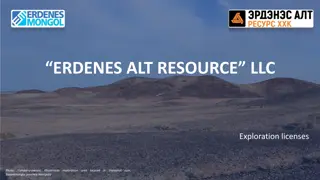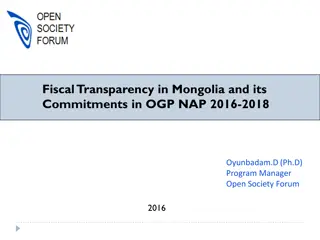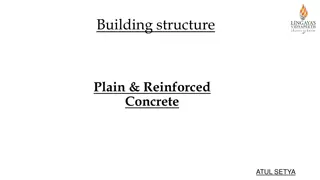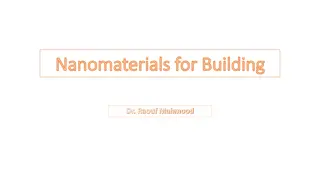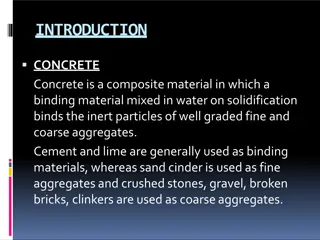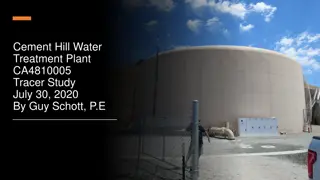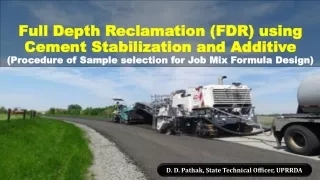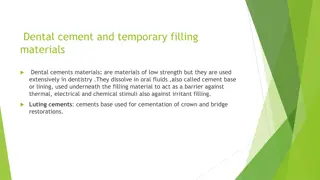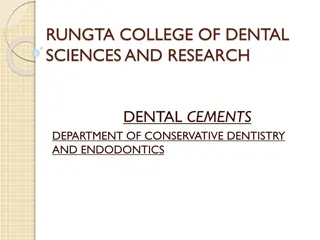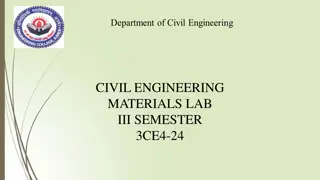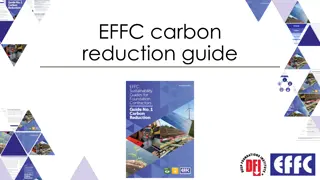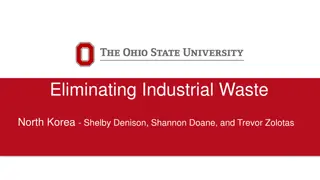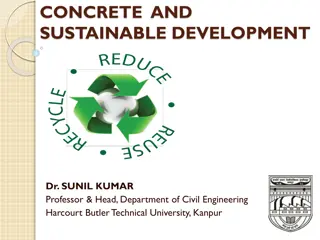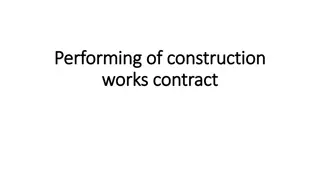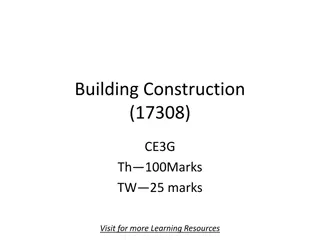Revolutionizing Construction in Mongolia through Sustainable Cement Solutions
Innovatively transforming Mongolia's construction sector by integrating supplementary cementitious materials (SCM) to reduce carbon emissions, with a focus on recycling fly ash from coal-fired power plants. The National Action Programme on Climate Change (NAPCC) aligns with the project, aiming to mitigate greenhouse gas emissions and integrate climate change concerns into national policies. Mongolia seeks financing opportunities for NAMA-related actions from bilateral, multilateral, and innovative sources. The NAMA project targets significant CO2 reductions through implementing a 350,000 t/y SCM production facility.
Download Presentation

Please find below an Image/Link to download the presentation.
The content on the website is provided AS IS for your information and personal use only. It may not be sold, licensed, or shared on other websites without obtaining consent from the author. Download presentation by click this link. If you encounter any issues during the download, it is possible that the publisher has removed the file from their server.
E N D
Presentation Transcript
Transforming construction in Mongolia using Supplementary Cementitious Materials Mr. YEROOLT BAYART Director of International Cooperation Division, Ministry of Environment, Green Development and Tourism of Mongolia
PROJECT INFORMATION Salient features of the Proposed NAMA Sector : Industry Technology : Energy Efficiency Type of action : National/Sectoral goal GHGs covered by the action: CO2 Expected timeframe for the preparation Implementing entity : Ministry of Environment, Green Development and Total estimated cost of implementation : 15 million Required support for the implementaion of the action : 15 million : 4 years Tourism Cement production emitting approximately 1 ton of CO2 per ton of cement on average (in Mongolia 1.2 tCO2e), responsible for 5-10% of total emissions globally. Cement production shares 25% of total coal consumption in Mongolia.
NAMA DESCRIPTION & EXPECTED OUTPUTS NAMA Description The objective of the proposed NAMA is to initiate the transformation of Mongolia s construction sector towards a less carbon intensive development path through the introduction of supplementary cementitious materials (SCM) that can replace up to 70% of cement in concrete. The proposed NAMA is a very innovative approach because it will introduce an environmentally sound alternative to Portland cement, thus leading to transform the building materials sector. Moreover, the project will recycle fly ash from local coal-fired power plants as raw material. The NAMA project aims at establishing a 350,000 t/y supplementary cementitious materials /SCM/ production facility, the design of supportive policies and management of the standardization process. The project will recycle fly ash from local coal-fired power plants as raw material. The NAMA is expected to result in some 420,000 tCO2 emissions reductions annually.
RELEVANCY OF THE NAMA IN THE NATIONAL POLICY CONTEXT National Action Programme on Climate Change (NAPCC) and the programme was approved by the State Great Khural (Parliament) in 2000 and updated in 2011. The action programme includes the national policy and strategy to tackle the adverse impacts of climate change and to mitigate greenhouse gas emissions. NAPCC is aimed not only at meeting the UNFCCC obligations, but also at setting priorities for action and to integrate climate change concerns into other national and sectoral development plans and programmes. FINANCING Mongolia is seeking various opportunities for financing NAMA related actions, including bilateral and multilateral financial resources including ODA and soft loan. Also, in order to scale up the level of finance and facilitate transfer of technologies, finances through mechanisms such as the NAMA Facility, ADB, KFW and other innovative means of finance are also expected .
SUSTAINABLE DEVELOPMENT BENEFITS Environmental benefits: The project uses either fly ash recycled from coal-fired power plants or very abundant natural resources (volcanic ash) as raw material, while Portland Cement (PC) production consumes the depleting natural reserves of limestone; The project reduces coal-based energy consumption by 90% and reduce water demand in concrete by 40% compared to PC-based concrete; Avoided harmful emissions of mercury and particulate matters associated with coal consumption can contribute to reduce atmospheric pollution. Performance benefits: SCM delivers stronger and longer-lasting concrete; SCM concrete improves mitigation of alkali-silica reactivity, reduces heat of hydration, reduces concrete permeability, improves protection from chloride and sulphate attacks; SCM concrete road paving significantly increase paving productivity and road surface durability as well as reduce petrol consumption by about 5%; By extending the life of structures, SCM concrete extends their replacement cycle while at the same time reducing maintenance costs. Economic benefits: The total cost of the SCM plant construction is ten times less than PC plant; Replacement of energy intensive PC process with mechanically activated SCM means low operational and maintenance costs; Superior return on investment due to a combination of lower CAPEX and OPEX.


